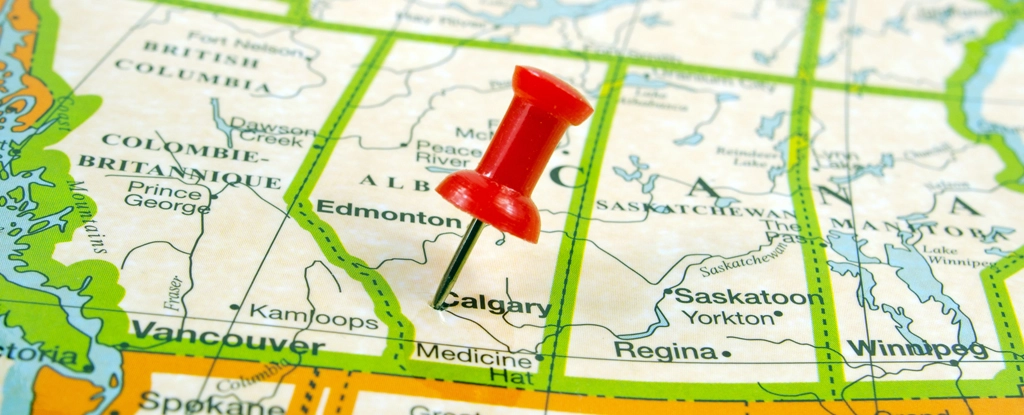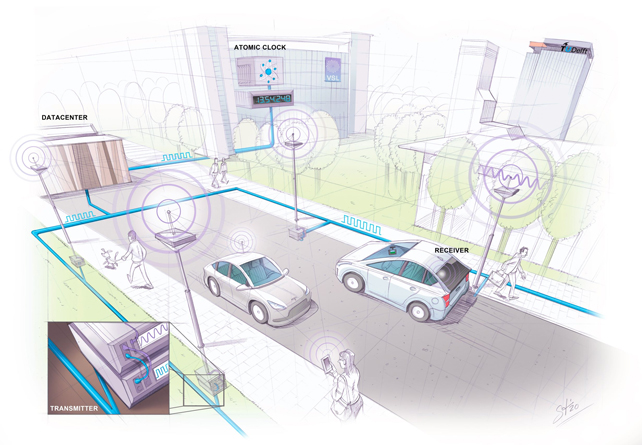“SuperGPS” technology determines location in inches
- November 23, 2022
- 0
Many of us rely on GPS (Global Positioning System) to predict travel times, find the way to new places, avoid traffic jams, keep an eye on children and
Many of us rely on GPS (Global Positioning System) to predict travel times, find the way to new places, avoid traffic jams, keep an eye on children and

Many of us rely on GPS (Global Positioning System) to predict travel times, find the way to new places, avoid traffic jams, keep an eye on children and generally avoid getting lost. However, this is not always the most reliable system, especially in crowded areas where it is difficult to get a direct line of sight from the satellite. Now, researchers have developed a new and advanced technology that could eventually replace GPS in some scenarios. Called SuperGPS, it is accurate to 10 centimeters (or 3.9 inches) and does not rely on navigation satellite systems.
The new approach involves using cellular-like networks, but instead of streaming data to our phones, the network gets a correct patch on the device. A combination of radio transmitters and fiber optic networks forms the backbone of the system, with some clever tweaking.
“We realized that with a few cutting-edge innovations, the telecommunications network can be turned into a very accurate alternative positioning system that does not depend on GPS,” says physicist Jeroen Kolemey of Vrije Universiteit Amsterdam in the Netherlands. “We have succeeded and successfully developed a system that can provide connectivity and precise positioning and timing, such as GPS, in the same way that mobile networks and Wi-Fi networks do.”
At a test site with six radio transmitters, the researchers were able to demonstrate their system in action in an area of 660 square meters (7,104 square feet). The duration of transmitted radio signals can be measured and interpreted to measure distance, which then reveals the position of individual devices.
One of the key components of the network’s new positioning system is a synchronized atomic clock: perfect timing means more accurate positioning. Basically, fiber optic cables act as links that keep everything in sync within billionths of a second.

The system also uses a much larger radio signal bandwidth than usual – since radio frequency is expensive due to the shortage of bandwidth, the team used several small band radio signals combined to form a larger virtual bandwidth for network communication. This extra bandwidth overcomes one of the biggest problems with standard GPS; this is because radio signals bounce back from buildings and can get mixed up quickly.
“This can make GPS unreliable in urban environments, which will be a problem if we want to use automated vehicles, for example,” says electrical engineer Christian Tiberius of Delft University of Technology in the Netherlands.
According to the researchers who developed it, the new system, such as automated tools, could be useful for planning quantum communication networks and next-generation networks for mobile devices. While global navigation satellite systems (GNSS), including GPS, undoubtedly have their uses and will continue to do so for a long time to come, experts are constantly looking for ways to improve and improve them.
More testing is needed to determine that this is a true GPS alternative. The proposed network system will also take time to set up, although the transmission protocols and hardware are already in use. According to the researchers, existing cell and Wi-Fi masts could be adapted for this job, at least.
“This study offers a glimpse into a future where telecommunications networks not only provide communications, but also provide GNSS-independent timing and positioning services with unprecedented accuracy and reliability,” the researchers wrote in their published paper.
Source: Port Altele
John Wilkes is a seasoned journalist and author at Div Bracket. He specializes in covering trending news across a wide range of topics, from politics to entertainment and everything in between.